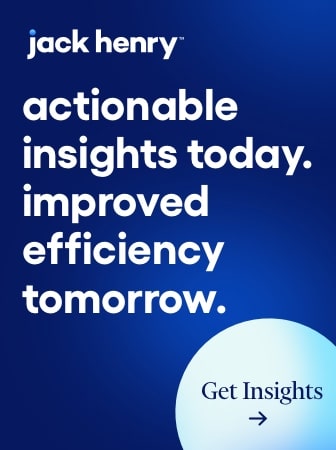The podcast: Building a Digital-First Mindset in Banking [June 2024]
Source: Banking Transformed
Why we picked it: Seldom in this industry is the medium-sized story told. People read the big stories — the “how to navigate a complete brand overhaul and what we learned from it” types. And they read the small ones about the bank or credit union marketer making a big difference in communities in the middle of nowhere. But often the stories in the middle can pack a big punch and offer important lessons.
The digital era is now a mainstay in the banking industry, and financial institutions must embark on a journey to redefine their operations, culture and customer experiences.
The lessons for navigating this — while also inspiring a heavier digital touch — can be hard to find. But, there are plenty of them in the journeys of BMO which, in the years since COVID, underwent an acquisition and a name adjustment.
Brianna Elsass, a seasoned professional with an impressive track record in digital banking, was a significant part of that journey. In a new Banking Transformed podcast with Jim Marous, Elsass’ experiences at BMO shed light on the strategies, obstacles, and triumphs that shaped its path to becoming a digitally-driven organization. From the process of replatforming to navigating acquisition challenges, BMO’s story offers a compelling case study for banks seeking to embrace change and thrive in the digital age.
Key Takeaways:
- Digital transformation requires a top-down commitment and a clear vision to drive change across the organization.
- Engaging employees and fostering a culture of innovation are essential components of a successful digital transformation.
- Focusing on incremental improvements and quick wins can help build momentum and advocate for broader digital adoption.
- Transparent communication and a customer-centric approach are key when navigating acquisition challenges and integrating digital experiences.
The Journey Begins: Setting the Stage for Digital Transformation
When Brianna Elsass joined the organization in October 2016, it was evident the bank couldn’t work toward growth if it didn’t quickly adopt “digital transformation” strategies, which was back then a hot key phrase.
“Everybody knew we needed a digital-first mindset and a new digital experience,” she said in the conversation with Marous. “We really weren’t driving much acquisition digitally. We weren’t able to service folks very well digitally.”
After squaring away with executive leadership, BMO embarked on an ambitious plan to “replatform” their digital experiences, aiming to enhance customer acquisition, servicing and engagement. “We launched our first customer experience because we had changed out the front end, the API layer, and all the middle layers all the way down to effectively where they connected to the host, pulled it on-site. So, we changed all that out.”
It took some time, particularly in the office. Elsass spent several years emphasizing the importance of agile methodologies, iterative development and collaborative decision-making to the teams she worked with. By working toward incremental progress and demonstrating the value of digital initiatives, BMO gradually built support and enthusiasm among its workforce.

Modern Customer Journey Mapping
Customers navigate a multi-touch, multi-channel journey before interacting with your brand. Do you deliver successful and seamless experiences at every touchpoint? Download webinar.

Industry Cloud for Banking from PwC
PwC’s Industry Cloud for Banking applies our deep industry knowledge to your specific business needs.
Building employee engagement didn’t mean solving big problems with even bigger solutions, Elsass says. “Everybody tends to think that this digital transformation has to be all encompassing and you pull everything out at once and then you slam everything in at once. And it doesn’t have to be that.”
Those are her biggest ‘aha moments’, she says. Once at a conference, she discovered a small remedy for a banker back home. A simple fix, but it allowed her to ease friction in her organization by the time the conference ended.
“When you get that, you alleviate some of the nerves and the pain, and then they’ll be more open and transparent with you on the next item,” she says. “If you build up these incremental pieces, you get more advocacy around the iteration and the agile process and the digital process and automating things, whether or not it’s even a massive project.”
For a head of digital at a top-20 U.S. bank, the small moments are the biggest wins.
It’s Not Cheesy: Engaging Employees Requires Cultivating a Culture of Innovation
To foster a culture of innovation, BMO actively involved employees in the digital transformation process. Elsass described the creation of “digital advocates” — a group of branch managers, contact center leads and associates passionate about digital technologies.
“They were a number of associates or branch managers or contact center leads that had a little bit of exposure to digital or had a passion around digital. Sometimes they were younger, sometimes they weren’t, sometimes they were more seasoned in their career. But they had a passion and an interest in learning,” she says.
These advocates played a crucial role in testing new functionalities, providing feedback, and championing digital adoption among their colleagues. Elsass emphasized the importance of engaging employees, specifically through forums where staff from all over the bank could ask questions. “When we launched new functionality, they helped us test it out first. So, they had experience and exposure to what we were building. We’d ask for feedback.”

Navigating Acquisition Challenges: Integrating Digital Experiences
BMO’s acquisition of Bank of the West had digital challenges of its own. Elsass and her team had to navigate the complexities of merging different platforms, functionalities and customer expectations. For example, Bank of the West had specific delegates for small business customers, she says. “I was like, if we had the same company, I could assign you certain tasks in the digital experience to do on behalf. I don’t have that at BMO. At least today within my digital platform.”
Her team prioritized a seamless conversion journey, as one does in a merger, communicating as transparently as possible with customers and employers. Being upfront with both about gaps and finding alternative solutions was critical, she says.
“We talked about it. We spent the time, we spent the energy, we laid out, ‘here’s the friction points we’re going to create, and are we going to spend the energy and the money to try to close those before the conversion,’ which maybe would then cause a detriment on the conversion experience or our timelines that way.”
The process wasn’t swift, or didn’t feel it to Elsass. She says from ideation to completion, the acquisition ran about a year and a half, and it certainly wasn’t digitally led — which had the most potential to cause friction in the customer conversion. To mitigate the risk of customer attrition, Elsass and her team set up tracks to keep the digital experience moving forward.
“There’s holes that we have and how many of the holes can we plug? And so, we were building against a [business as usual] backlog and building against conversion simultaneously. And so, over the course of the year and a half, I think my team put in, I think it was 69 different releases over the course of a year and a half. And it’s, looking at some of those were very big. Some of those were small.”
In Conclusion
By securing a top-down commitment, fostering a culture of innovation, focusing on incremental wins and transparently communicating with stakeholders throughout the process of digitization, banks can successfully embrace change and redefine their operations for the future.
As the industry continues to evolve, organizations that prioritize digital transformation and employee engagement will be best equipped to meet the changing needs of their customers and thrive in an increasingly competitive landscape. BMO’s story serves as an inspiration for banks seeking to embark on their own digital transformation journeys and successfully navigate the challenges and opportunities that lie ahead.
Editor’s note: This article was prepared with AI language software and edited for clarity and accuracy by The Financial Brand editorial team.







